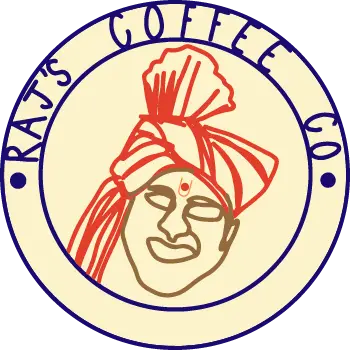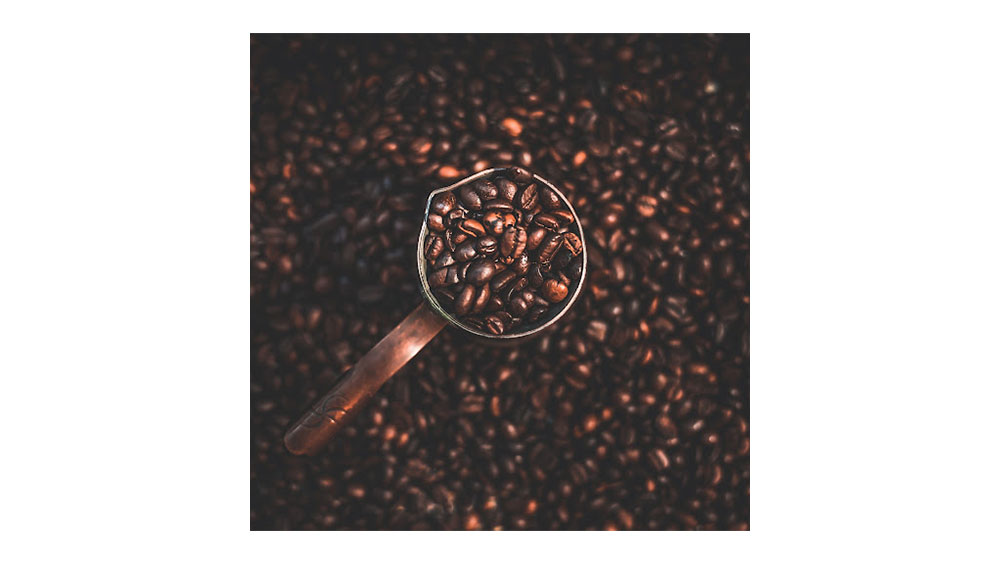Introduction
The various coffee roasts can be a bit confusing to beginner coffee aficionados. There are a lot of terms and processes to understand coffee roasting. Let us walk you through a beginner’s guide to roasts.
Roasting coffee is one of the simplest and most interesting things that happen throughout the journey of coffee beans. They’re grown, of course, before being picked, processed, roasted, ground, and brewed. The roasting part is relatively simple to understand; it’s kind of like baking something in an oven. However, the type of coffee roasts you use in your coffee can drastically affect the taste, quality, and texture of your morning cup. If you’re looking to buy your own beans, it’s worth knowing a little bit about roasting coffee.
There are so many nuanced elements and complex effects that can take place during coffee roasting. Coffee beans aren’t a simple thing – roasting them can have a wide variety of effects, depending upon where the beans are grown, how they’re processed, and a number of other variables.
In this article, we’re going to give you some interesting and relevant things that you might like to know about roasting coffee. We’re going to talk about roast types, as well as how those roasts may affect the coffee in your mug. The “perfect” cup of coffee is pretty subjective, so hopefully this article will help you select beans that match your preferences!
From light to dark - and everything in between
If you’re as fascinated by everything about coffee as we are, then you’ve likely been immersed in terms like ‘light roast’ and ‘espresso roast’ for a while now. There’s nothing wrong with that – diving in head first is the best way to learn quickly.
To get us started, let’s get something simple established: when we refer to ‘light’, ‘medium’, or ‘dark’ in this article, we’ll be referring to the amount of roasting that a coffee bean has had. You can think of it as you’d think of a steak – a light roast could be compared to a rare steak, while dark could be compared to well done.
That’s a simple concept, but it’s one that can get lost in some people’s heads. For that reason, we wanted to put the idea in your head first of all – it’s a sliding scale that, essentially, judges how much the beans have been ‘cooked’.
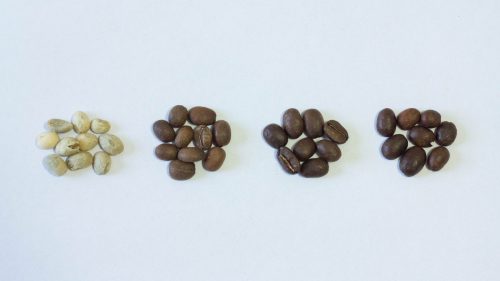
The Science Behind Roast Types
To understand the impact of different levels of roasting, we want to talk about the science that goes on during the process of roasting coffee beans. It’s not dissimilar to the process of cooking something in your kitchen, and, while more complex, is scarcely more scientific.
Coffee beans start out ‘green’. They’re the pit of the coffee cherry, which is what grows on coffee plants. The fruit is discarded, with the seed being fully dried before being roasted.
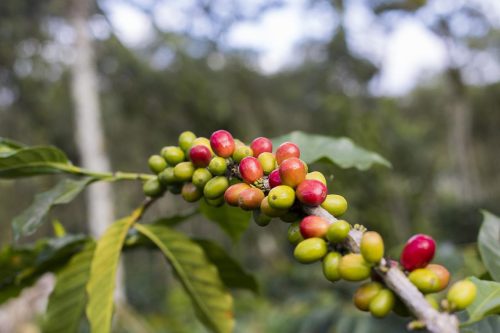
The roasting process is entirely necessary, as it allows the dense, tough beans to become more brittle, allowing them to be ground, and for the flavor to be extracted. During the roasting process, assorted things happen within the bean.
Principally, oils from within the bean are rendered, meaning separated from where they’ve occurred naturally. Then, as the bean heats up, they rise to the surface of the beans. This is why, when a bean is roasted for longer, and considered a dark roast, it is generally a little oilier than a lighter roast – more oil has been rendered out of the bean, and then coats the bean itself.
The other principal thing that occurs during roasting is the development and cooking of sugars within the bean. Beans contain a lot of starches and carbohydrates, just like other nuts and tough roots. When heat is applied to those starches and carbohydrates, they break down into sugars. These sugars bring sweetness to the coffee beans, allowing them to become tastier.
These two processes combine, over more time spent in the roasting chamber, to develop flavors within the coffee beans. While a green coffee bean typically tastes bitter and vegetal, as you’d expect of a cherry pit, the oils, and sugars that emerge through roasting develop the flavors into something rich, sweet, and complex.
This science, of course, is dependent upon the amount of time in the roasting chamber. For instance, a light roast may retain some of the acidic, vegetal notes that a green coffee bean has in abundance. A dark roast may contain some caramel-style notes, from carbohydrates that have become sugars, and then been cooked in the roaster.
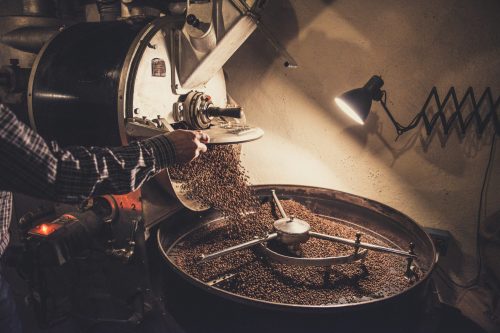
Generally speaking, roasters may consider different beans to tend toward being ideal for different roasts. For example, coffee grown such that the beans contain extra carbohydrates will likely suit a darker roast – there are more chemicals to be processed into sugar. A lighter roast for a bean like that, though, likely wouldn’t allow for the carbohydrates to be processed very well, leading to an overly vegetal flavor in the final brew.
Light Coffee Roasts
Lightly roasted beans are the lightest in color and bear very little oil on their surface. This is because they are not roasted long enough for the oils and sugars to burst forth from the center of the bean.
Light roasts are usually fruity, acidic, and present a flavor and aroma palette indicative of a region of origin. That is because these beans maintain their natural flavors more than darker roasted beans.

Lighter roasts are often suited to tall coffee drinks, such as those made with an Aeropress or a French press – the lack of sugar can mean a lightly roasted espresso coffee comes out a little acidic.
Light roasts generally have the highest caffeine content. This is because the heat used in roasting naturally breaks the naturally-occurring caffeine of the coffee bean. Since light roasts spend the least amount of time under heat, the caffeine is preserved. So, keep in mind as we move forward that medium and dark roasts have less and less caffeine. This is contrary to the popular misconception darker, bolder roasts are “stronger.” They are – but just in flavor, not in caffeine content.
Medium Coffee Roasts
The medium roasts typically don’t have a lot of oil on the surface but have a stronger body and flavor than light roasts. These beans can be enjoyed in a number of grinds and have a nice and balanced flavor and aroma palette.
A medium roast is a great place to start experimenting with different roasts. The reason for this is that most coffee that is sold at chains is quite darkly roasted – this is because dark roasts can give a more consistent flavor, compared to other roasts. Medium roasts will be a little lighter and more interesting, without being too intensely acidic and bright for a first try.

Medium-Dark Coffee Roasts
The high temperatures medium-dark beans are roasted at allow the oils and sugars to start escaping a little more readily, and so their surface will glisten a little. The flavor and aroma palette for medium-dark beans will usually be a little bittersweet, rich, full, and less acidic than lighter roasted beans. These beans can be ground a bit finer than lighter beans, too.

Dark Coffee Roasts
These beans are especially dark in color and will glisten with oil! Dark beans bear little to no flavors indicative of the region of origin of the beans but instead will have flavors indicative of the roasting methods used to roast the beans.
Dark roasts may have sweet, toasty, buttery, chocolatey, and even bread-like flavors. The sugars that emerge from the beans’ surface have had some time to caramelize and build a new and complex flavor. These beans are more brittle and can be easily ground very finely, making them ideal for espresso.

Espresso Coffee Roasts and Dark Coffee Roasts; What is the difference?
Some coffee fans may be wondering, however, what is espresso roast? How is it different from dark roast coffee? To be clear, espresso roast is just another name for dark roasted coffee beans. There is no difference between “espresso roast” and “dark roast” but some dark roasted beans may be labeled as “espresso roast” for marketing purposes and because dark roasted beans are ideal for the espresso brewing method.
Dark roasted beans are lighter (in terms of weight), more brittle, and easily ground into a very fine consistency. This makes dark roast coffee perfect for brewing espresso because espresso grounds need to be finely ground and tightly packed into the espresso portafilter. Then, hot water is forced through the densely packed coffee grounds, yielding an intense, bold, and highly caffeinated shot of coffee.
So, from a coffee purist perspective, espresso is a method of brewing coffee, not a roast type. Dark roasted beans may be labeled “espresso roast” because dark roasted beans synergize with espresso brewing so well that folks with espresso machines may want to opt exclusively for dark roasted coffee beans. This is not to say dark roast coffee cannot be used for other brewing devices or methods, like the AeroPress, for example. And conversely, you can also use lighter roasts in an espresso if you prefer that taste.
Conclusion
The different types of coffee roasts all have some incredible things to offer and are ideal for different styles of coffee preparation. If you do not have a favorite roast type just yet, have no fear, one of the best ways to explore coffee is to get out there and try different brews! So feel free to experience as many roast types as you like until you find your perfect roasting style. Happy brewing!
